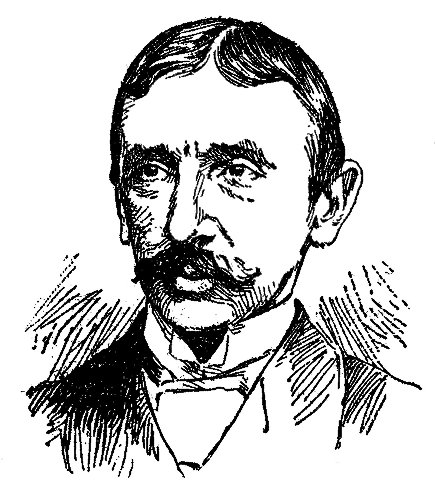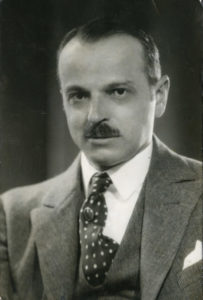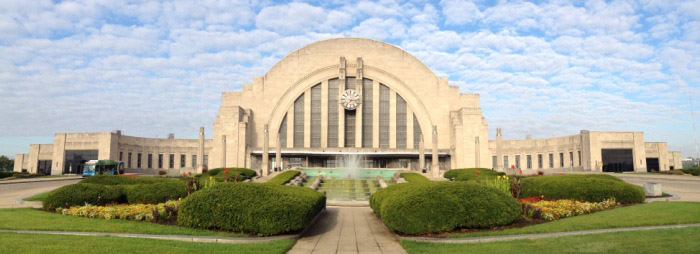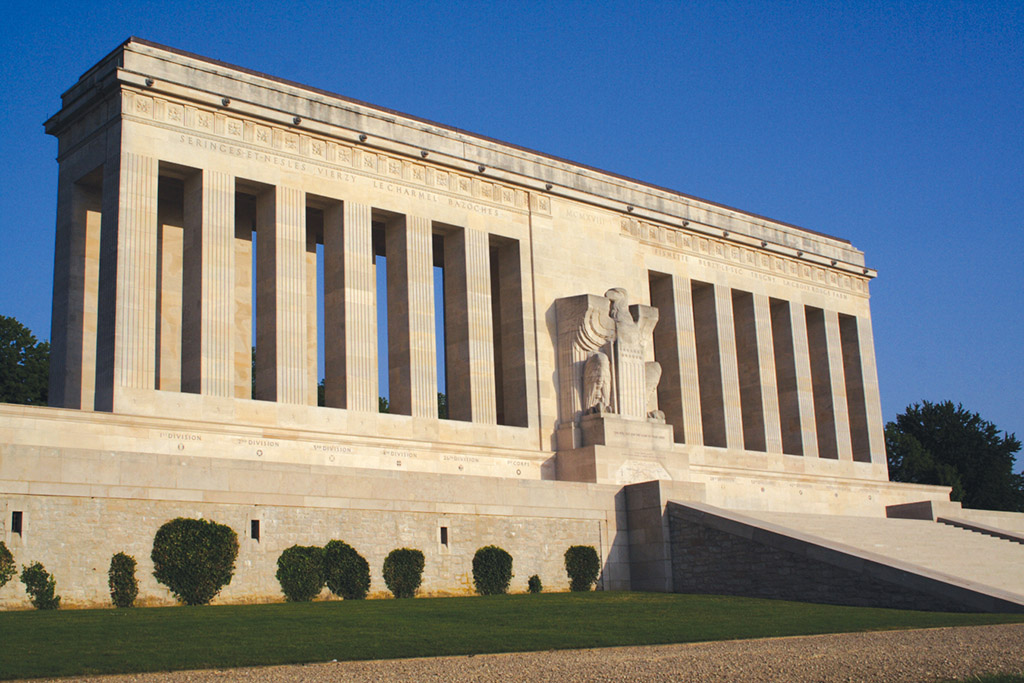Recently, we were contacted by Joseph-James Ahern, Senior Archivist at the University of Pennsylvania’s University Archives and Record Center and USS Constitution Museum member, with information about documents and photographs discovered in the university’s archives. The records told the story of USS Constitution as the centerpiece to a hypothetical U.S. Navy memorial, submitted by U. of Penn student David C. Tatman as part of an architecture scholarship competition. The following post was written in collaboration with Mr. Ahern to share his new discovery.
* * *
“Let us keep ‘Old Ironsides’ at home. She has…become a Nation’s ship, and should be preserved…in honorable pomp, as a glorious monument of her own, and our other naval victories…
Let us preserve her as a precious model and example for future imitations of illustrious performances!” [National Intelligencer, May 23, 1815]
On May 10, 1897 friends of Philadelphia architect John Stewardson (1858-1896) founded a travel scholarship in his name following his untimely death in 1896. Stewardson had studied architecture in the United States and Paris. With his childhood friend Walter Cope, they founded the firm Cope and Stewardson in 1885. By 1890 the two had designed over two hundred buildings, mastering the Collegiate Gothic style as seen on the campuses of Bryn Mawr College, Princeton University, Washington University of St. Louis, and the University of Pennsylvania. In addition to his design firm, Stewardson was appointed a lecturer in architecture at the University of Pennsylvania in 1892.

1896 [Courtesy University of Pennsylvania Archives and Record Center]
In 1938, the Managing Committee asked Paul Philippe Cret (1876-1945) to design the scholarship problem. Cret (pronounced “Cray”) was born in Lyon, France and had studied in his uncle’s architecture office and later at the Ecole des Beaux-Arts, Lyon.

In 1903, Cret was recruited to teach architectural design at the University of Pennsylvania. Over the next thirty-four years, until his retirement in 1937, he influenced a generation of American architects. While Cret himself was trained in the classical but exuberant Beaux-Arts style, he was a restrained classicist at his core. His public buildings exhibited what he called a “New Classicism” which looked back at ancient classical architecture for its order and proportions, but also looked forward, presenting a classicism that responded to the needs of the modern world.

Cret’s 1938 Stewardson Scholarship project was entitled “A Memorial to the Navy”, with USS Constitution as the focal point. He noted, “In several countries, warships made famous by the part they played in naval battles are preserved by the care of the government as patriotic relics and visited yearly by large crowds, such as the frigate ‘Constitution‘ in this country and Nelson’s ‘Victory‘ at Portsmouth, England.” His proposed final thesis was to be a hypothetical memorial in a park-like setting on a river. Cret was very detailed and specific in the requirements for the memorial:
“To provide a proper setting for the ‘Constitution’, a plot of land bordering a river and measuring 500′ x 700′ has been set aside….The memorial shall include…A basin dug within the limits of the plot…This basin will berth the historical ship…and be accessible from three sides to visitors to allow the public to see the various aspects of the ship…the fourth side is to open to the river….Porticos, terraces and steps will surround the basin and be arranged so as to provide a monumental setting for patriotic celebrations….A naval museum…shall receive the historical data, maps, costumes, ensigns, paintings related to the naval engagements of the ship. Accommodations for the comfort of the public for a curator, and a small library shall be provided….An outdoor display of guns, a few statues or memorials, and naval implements will be distributed on the grounds.” [“Program for the Final Thesis for the 38th John Stewardson Memorial Scholarship in Architecture – A MEMORIAL TO THE NAVY”. University of Pennsylvania Archives and Records Center, School of Design, Office of the Dean of Records, UPB 8.4]

Tatman was born in Indiana and attended the Governor Dummer Academy in South Byfield, Massachusetts (the alma mater of USS Constitution‘s Commodore Edward Preble and known today as The Governor’s Academy). He entered the University of Pennsylvania in the fall of 1932 to study architecture. While Tatman’s overall presentation has not survived, photographs of his drawings were recently found in the School of Design Office of the Dean Records at the University Archives and Records Center at the University of Pennsylvania.

The 1938 scholarship Managing Committee had the photographs made shortly after the announcement of the winner. Tatman’s design is very reminiscent of Cret’s Chateau-Thierry American Monument in France and exhibits a restrained classical Beaux-Arts style that was becoming popular for memorials built in the 1920s and 1930s.

In Tatman’s scholarship design, visitors would have entered an open landscaped memorial area, with the masts of Constitution visible in the distance. To reach the ship they would have descended two flights of stairs into an open area that could be used for patriotic events. Upon leaving the ship visitors would have seen two memorial cannon flanking the stair case, and a built-in platform inscribed with “For God and for Country” and the years “1700” and “1812” (it is unclear what the date “1700” represents in the memorial). On the second level of the memorial was the small museum required by the program, with a series of gardens. Passersby in boats on the river would have seen Constitution docked before the classically influenced memorial.


David C. Tatman went on to enjoy a successful career as an architect. His hypothetical “A Memorial to the Navy” was in the spirit of the National Intelligencer‘s 1815 call to establish USS Constitution as a “glorious monument”. It was this sentiment for preservation that carried the ship into the 20th century. The 1927-1931 restoration, just a few short years before Tatman’s winning design, helped secure the long-term preservation of the iconic “Old Ironsides”. It may be that Paul Cret had Constitution‘s restoration and 1931-1934 National Cruise in mind when choosing her as the “patriotic relic” and focus of the 38th John Stewardson Memorial Scholarship in Architecture.
_____
The activity that is the subject of this blog article has been financed in part with Federal funds from the National Maritime Heritage Grant program, administered by the National Park Service, U.S. Department of the Interior, through the Massachusetts Historical Commission, Secretary of the Commonwealth William Francis Galvin, Chairman. However, the contents and opinions do not necessarily reflect the views or policies of the Department of the Interior, or the Massachusetts Historical Commission, nor does the mention of trade names or commercial products constitute endorsement or recommendation by the Department of the Interior, or the Massachusetts Historical Commission.
The Author(s)
Joseph-James Ahern
Senior Archivist, University of Pennsylvania Archives
Joseph-James Ahern is the Senior Archivist at the University of Pennsylvania’s University Archives and Records Center.
Margherita Desy, Historian, Naval History and Heritage Command Detachment Boston
Historian, Naval History and Heritage Command
Margherita M. Desy is the Historian for USS Constitution at Naval History and Heritage Command Detachment Boston.
Kate Monea
Manager of Curatorial Affairs, USS Constitution Museum
Kate Monea is the Manager of Curatorial Affairs at the USS Constitution Museum.
